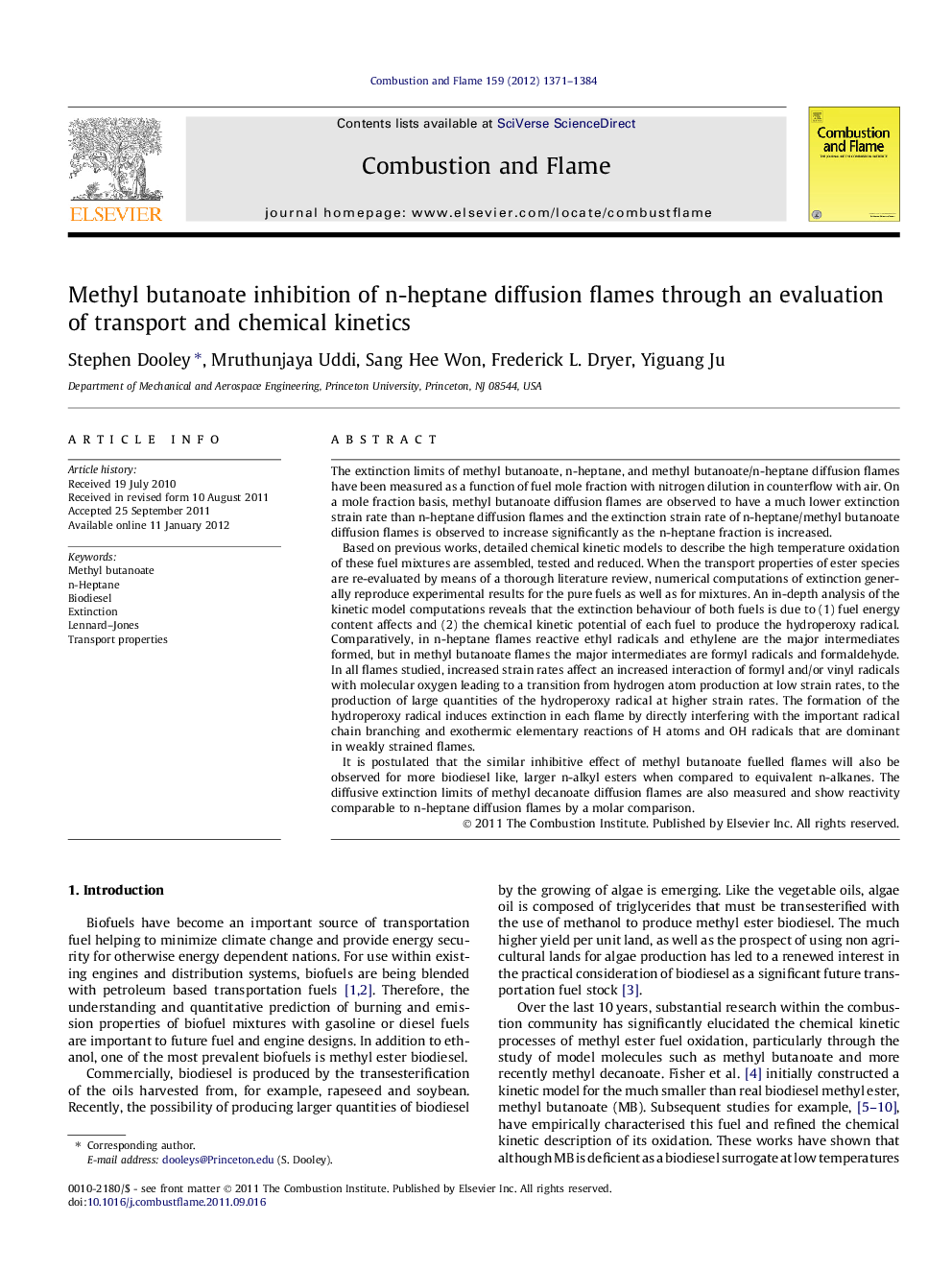| کد مقاله | کد نشریه | سال انتشار | مقاله انگلیسی | نسخه تمام متن |
|---|---|---|---|---|
| 166526 | 457785 | 2012 | 14 صفحه PDF | دانلود رایگان |

The extinction limits of methyl butanoate, n-heptane, and methyl butanoate/n-heptane diffusion flames have been measured as a function of fuel mole fraction with nitrogen dilution in counterflow with air. On a mole fraction basis, methyl butanoate diffusion flames are observed to have a much lower extinction strain rate than n-heptane diffusion flames and the extinction strain rate of n-heptane/methyl butanoate diffusion flames is observed to increase significantly as the n-heptane fraction is increased.Based on previous works, detailed chemical kinetic models to describe the high temperature oxidation of these fuel mixtures are assembled, tested and reduced. When the transport properties of ester species are re-evaluated by means of a thorough literature review, numerical computations of extinction generally reproduce experimental results for the pure fuels as well as for mixtures. An in-depth analysis of the kinetic model computations reveals that the extinction behaviour of both fuels is due to (1) fuel energy content affects and (2) the chemical kinetic potential of each fuel to produce the hydroperoxy radical. Comparatively, in n-heptane flames reactive ethyl radicals and ethylene are the major intermediates formed, but in methyl butanoate flames the major intermediates are formyl radicals and formaldehyde. In all flames studied, increased strain rates affect an increased interaction of formyl and/or vinyl radicals with molecular oxygen leading to a transition from hydrogen atom production at low strain rates, to the production of large quantities of the hydroperoxy radical at higher strain rates. The formation of the hydroperoxy radical induces extinction in each flame by directly interfering with the important radical chain branching and exothermic elementary reactions of H atoms and OH radicals that are dominant in weakly strained flames.It is postulated that the similar inhibitive effect of methyl butanoate fuelled flames will also be observed for more biodiesel like, larger n-alkyl esters when compared to equivalent n-alkanes. The diffusive extinction limits of methyl decanoate diffusion flames are also measured and show reactivity comparable to n-heptane diffusion flames by a molar comparison.
Journal: Combustion and Flame - Volume 159, Issue 4, April 2012, Pages 1371–1384